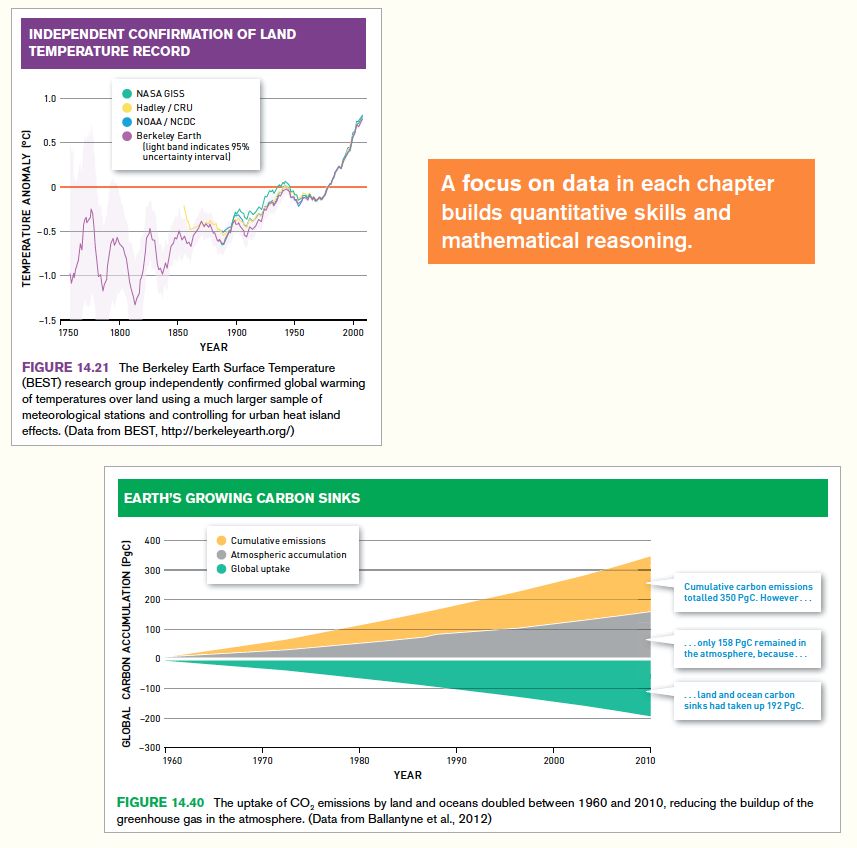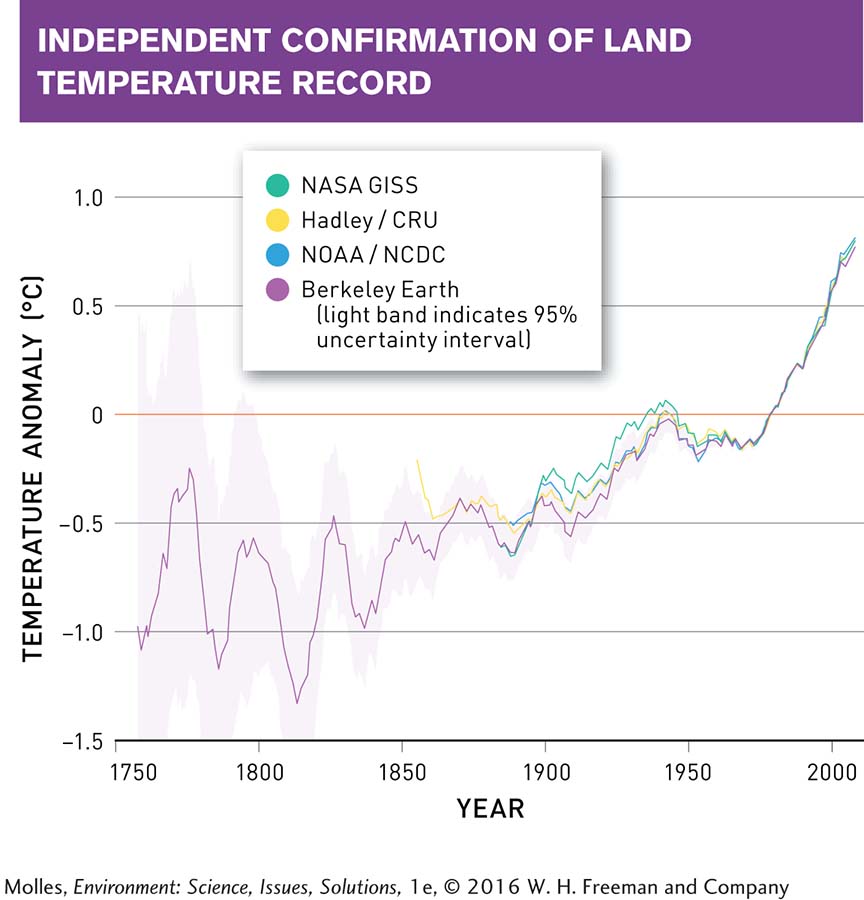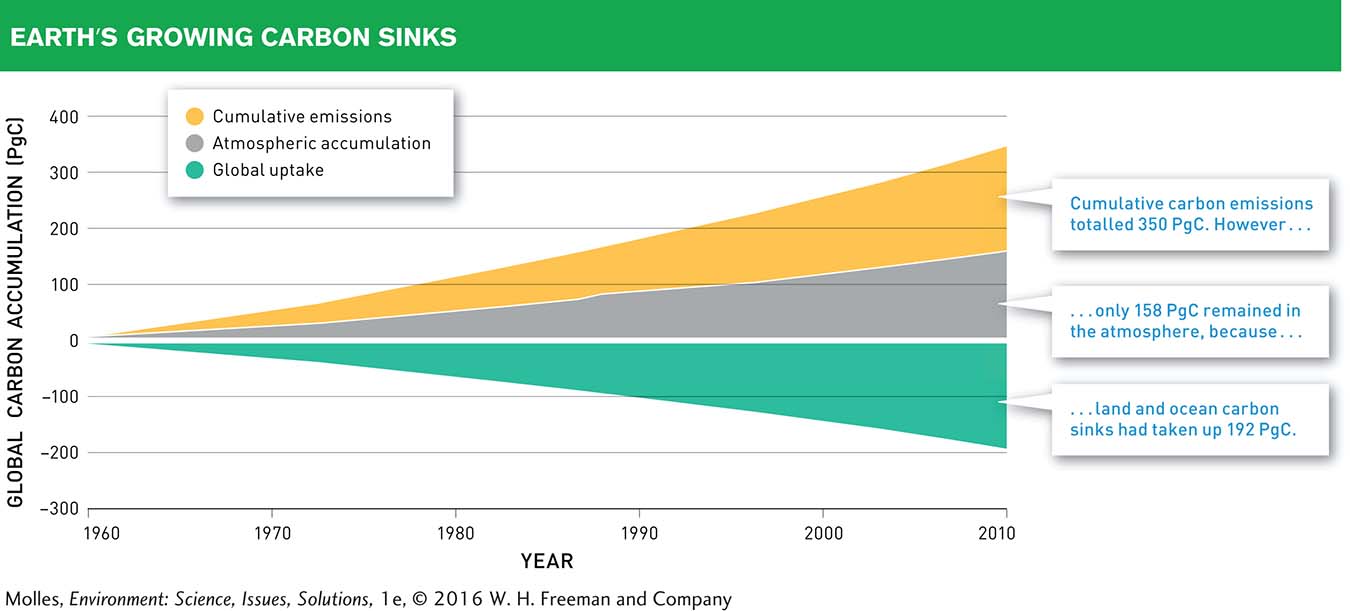A CENTRAL QUESTION SETS THE LEARNING GOAL FOR THE CHAPTER
XVI
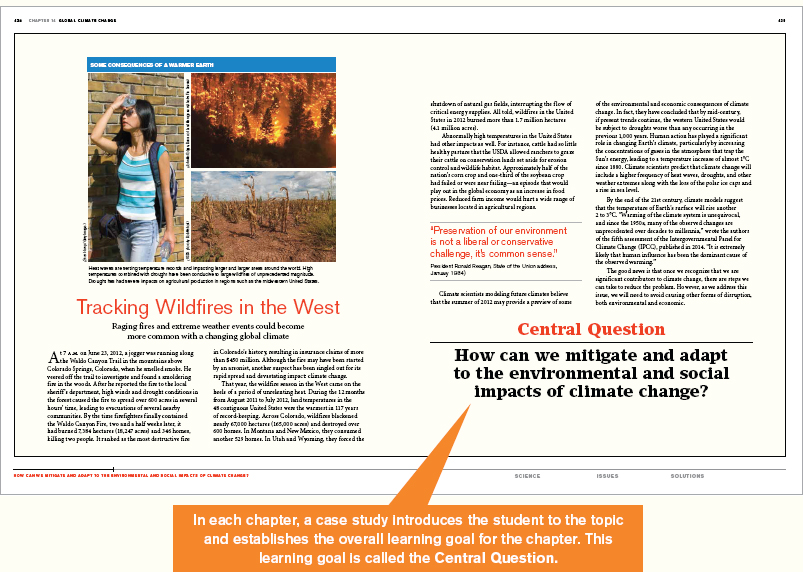
“Using the Central Question as a theme through the chapter allows students to keep a focus on a thesis statement, tying together the supporting information. I find the Central Question very helpful in connecting concepts throughout the chapter.”
–Terri Matiella, University of Texas, San Antonio
XVII
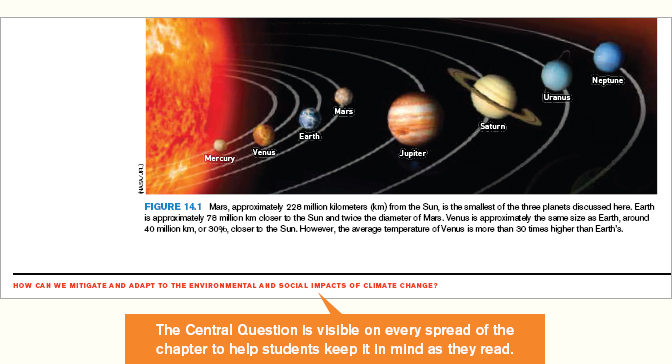
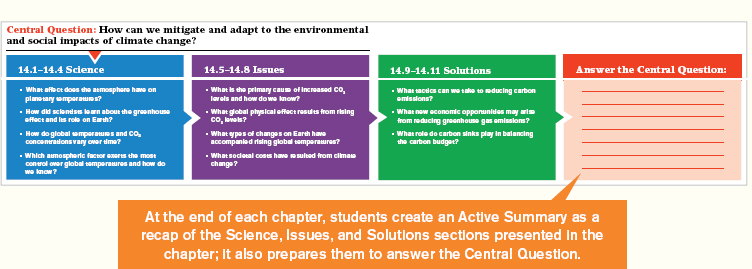
“This layout has great value in terms of encouraging students to read, and it also requires the student to answer questions along the way that feed back into the Central Question. This lends itself to a curriculum based more on concepts and discussion rather than simple fact recitation.”
–Megan Lahti, Arizona Western College
A Focus on Solutions
XVIII
The topics and issues in environmental science can leave students feeling hopeless and powerless about environmental issues. Because of the unique chapter structure, this text emphasizes solutions—

Empowering Students
Following the Solutions section of each chapter, students work through a list of activities they might try in order to directly engage with environmental science issues and feel that their experience counts.
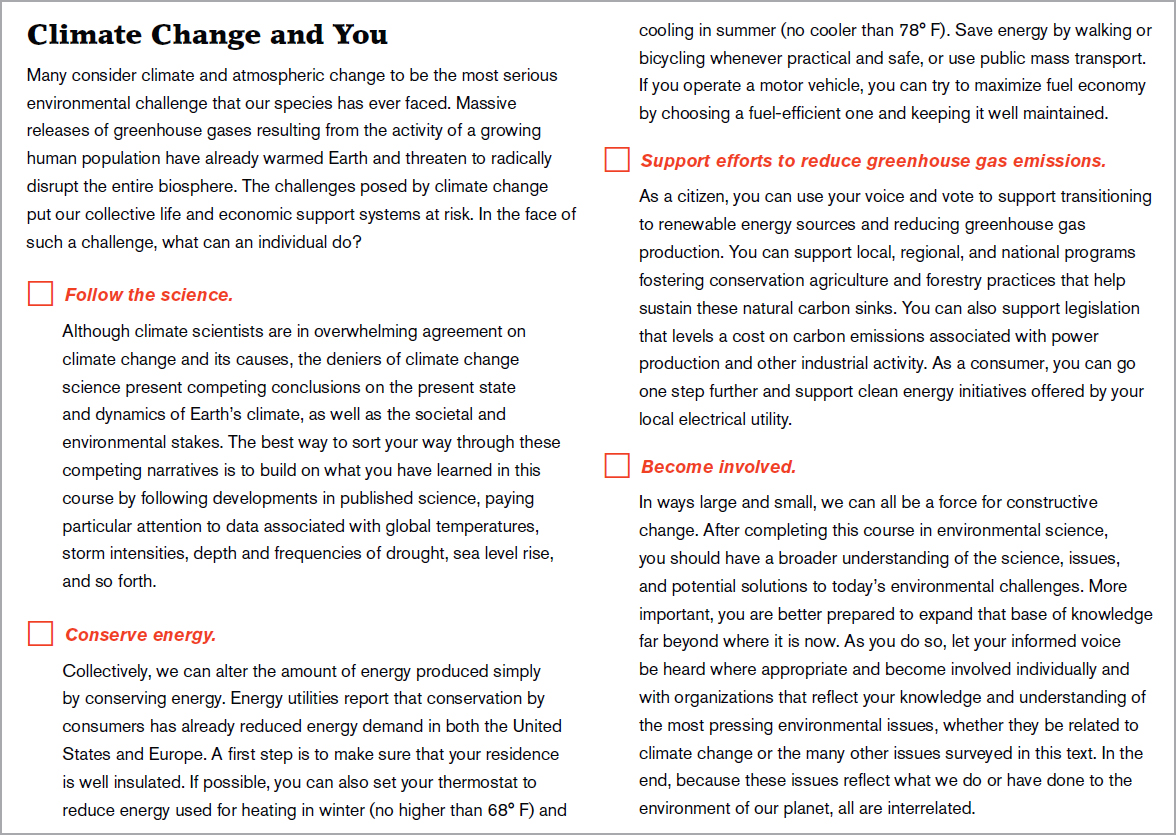
“This [science-
–Terri Matiella, University of Texas, San Antonio
Critical Thinking and Problem Solving
XIX
 Think About It questions after each chapter section ask students to analyze what they’ve just read and apply it to new situations.
Think About It questions after each chapter section ask students to analyze what they’ve just read and apply it to new situations.
 Margin questions throughout the chapter help students engage with the issues and can serve as lecture or discussion prompts.
Margin questions throughout the chapter help students engage with the issues and can serve as lecture or discussion prompts.
 Critical Analysis questions at the end of each chapter require students to apply higher-
Critical Analysis questions at the end of each chapter require students to apply higher-
